

Hate journal impact factors? New study gives you one more reason. Scientists have a love-hate relationship with the journal impact factor (JIF), the measurement used to rank technical journals by prestige.
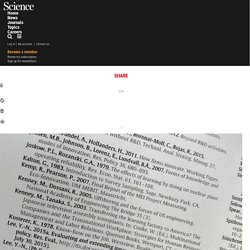
AuthorAID - About. AuthorAID is a free pioneering global network that provides support, mentoring, resources and training for researchers in low and middle income countries AuthorAID supports over 17,000 researchers in low and middle income countries to publish and communicate their work The AuthorAID network offers: Personal mentoring by highly published researchers and professional editorsOnline training workshops on scientific writingA discussion group for discussion and questions where researchers can benefit from advice and insights from members across the globeAccess to a range of documents and resources on best practice in writing and publicationA chance to network or collaborate with other researchersGrants for researchers to travel to a conference, or to organise a local workshop AuthorAID works directly with universities and institutions to build local capacity We work to embed research writing skills in universities and institutions around the world.
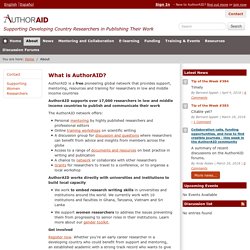
Get involved Register now. Spread the word. Increasing Visibility and Enhancing Impact of Research. Millions of research papers are published yearly by different journals and indexed in databases such as Web of Science (WoS) and SCOPUS.
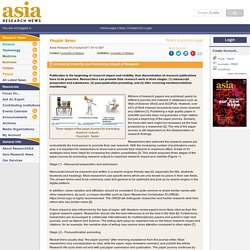
However, over 43% of WoS indexed documents have never received any citations [1]. Publishing a high quality paper in scientific journals does not guarantee a high citation but just a beginning of the paper journey. Similarly, the most cited work might not necessary be the best produced by a researcher [2]. The rest of the paper journey is still dependent on the dissemination of research findings.
Effective Strategies for Increasing Citation Frequency by Nader Ale Ebrahim, Hadi Salehi, Mohamed Amin Embi, Farid Habibi, Hossein Gholizadeh, Seyed Mohammad Motahar, Ali Ordi. Research Tools By: Nader Ale Ebrahim. How to review a paper. As junior scientists develop their expertise and make names for themselves, they are increasingly likely to receive invitations to review research manuscripts.
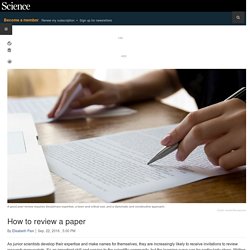
It’s an important skill and service to the scientific community, but the learning curve can be particularly steep. Writing a good review requires expertise in the field, an intimate knowledge of research methods, a critical mind, the ability to give fair and constructive feedback, and sensitivity to the feelings of authors on the receiving end. As a range of institutions and organizations around the world celebrate the essential role of peer review in upholding the quality of published research this week, Science Careers shares collected insights and advice about how to review papers from researchers across the spectrum.
The responses have been edited for clarity and brevity. Blog on your own and blog with your publisher. April 27, 2015 Both journal editors and authors rack their brains on how to increase citation scores.

This is why they should work together to solve the problem. As I pointed out in my previous entry on this topic, to be cited an article has to be first discovered. The discoverability of a paper can be increased with, amongst others, search engine optimization and academic blogging. I discussed the problem of SEO here. Why and how should you optimize academic articles for search engines? April 9, 2014 As an author of a blog on contemporary scientific publishing, I am forced to stress frequently two important facts.
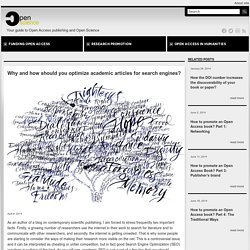
Firstly, a growing number of researchers use the internet in their work to search for literature and to communicate with other researchers, and secondly, the internet is getting crowded. That is why some people are starting to consider the ways of making their research more visible on the net. This is a controversial issue and it can be interpreted as cheating or unfair competition, but in fact good Search Engine Optimization (SEO) practices is nothing of the kind.
How to get indexed by Google Scholar? April 11, 2014 I previously wrote a bit about finding open access, scientific content, which is important for scientists during their entire research process.
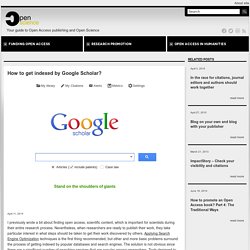
Nevertheless, when researchers are ready to publish their work, they take particular interest in what steps should be taken to get their work discovered by others. Applying Search Engine Optimization techniques is the first thing recommended, but other and more basic problems surround the process of getting indexed by popular databases and search engines. The solution is not obvious since there are a significant number of searching services that are popular among researchers.
Increase visibility of your article - Choosing a publication channel - LibGuides at Oulu University. The article title attracts readers to read the abstract - the abstract attracts readers to read the whole article.
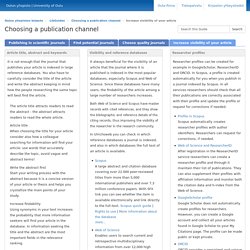
Article title When choosing the title for your article consider also how a colleague searching for information will find your article: use words that accurately describe the topic, avoid vague and abstract terms! Write the abstract first Start your writing process with the abstract because it is a concise version of your article or thesis and helps you crystallize the main points of your study. Increase findability Using synonyms in your text increases the probability that more information seekers will find your article in the database.
In information seeking the title and the abstract are the most important fields in the relevance ranking. Further reading: Belcher, W. ERIC Records. Predatory publishers gain foothold in Indian academia’s upper echelon. BENGALURU, INDIA—India is home to a flourishing community of predatory journals: outlets that masquerade as legitimate scientific publications but publish papers with little or no peer review while charging authors hefty fees.
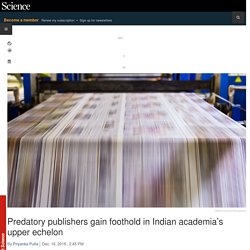
Many observers assumed that such bottom feeders were mostly attracting papers of dubious scientific value, if not plagiarized or fraudulent reports, from institutions in academia’s outer orbits. But a new analysis has found that many of the weak papers in predatory journals are coming from top-flight Indian research institutions. The finding has turned the spotlight on an academic culture in India that tends to prize quantity of publications over quality when evaluating researchers. This is an especially big problem in the life sciences, and it will take time to fix, says K. Vijayraghavan, the secretary of India’s Department of Biotechnology (DBT) in New Delhi, which funded some of the research that ended up in predatory journals. Journal Metrics - Scopus.com. Semantic Scholar. Microsoft Academic. Google Ngram Viewer. Write research documents online, together.
SEO: The Free Beginner's Guide From Moz. How We Grew Our Web Traffic By 5,000% In 3 Months (With Zero Advertising) That’s how much monthly website traffic we had to our website 3 months ago. 20 visitors/day may sound encouraging if you’re starting a personal project, but when your goal is to build a successful business with a team counting on you… Well, you’re probably screwed.
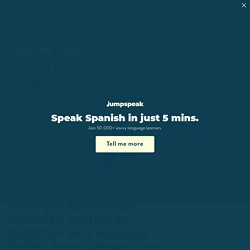
How to review manuscripts. 10 Easy Ways to Increase Your Citation Count: A Checklist. Summary.